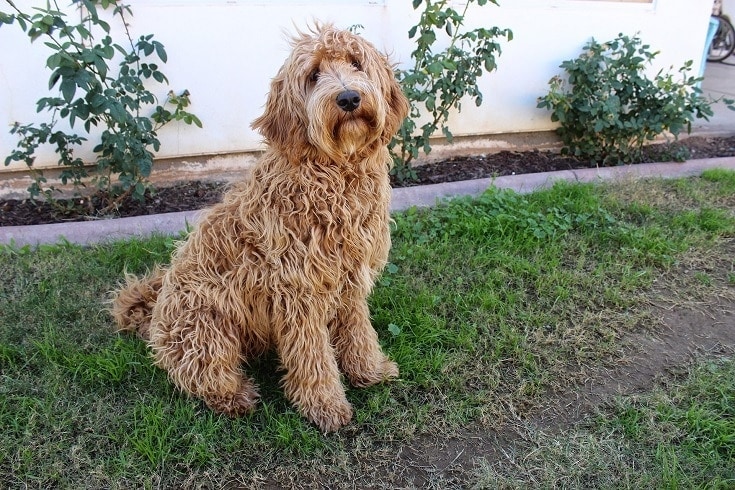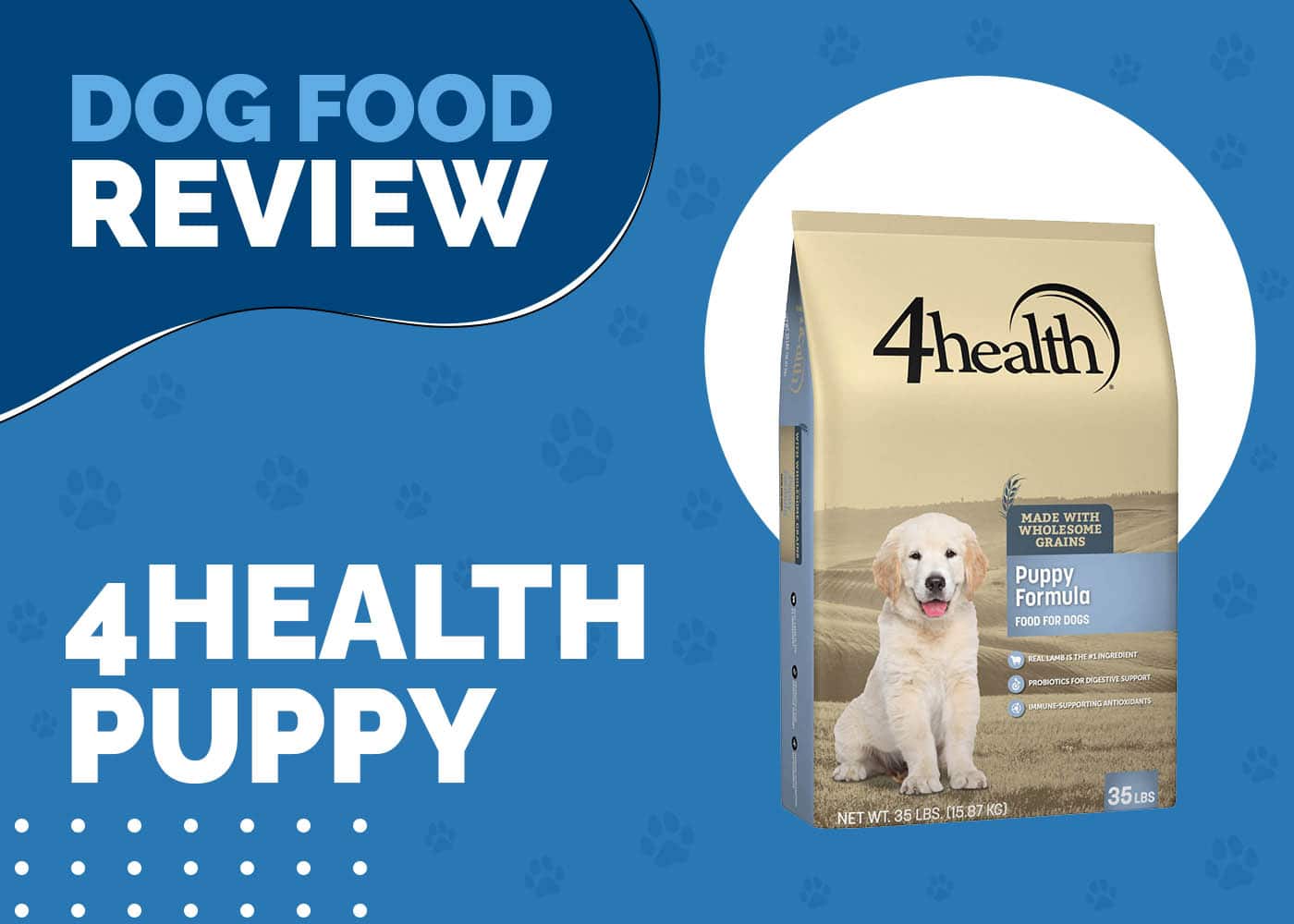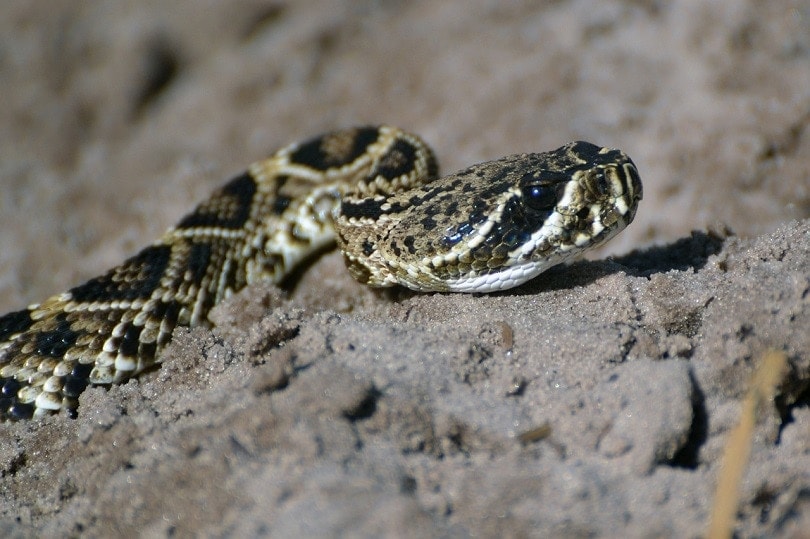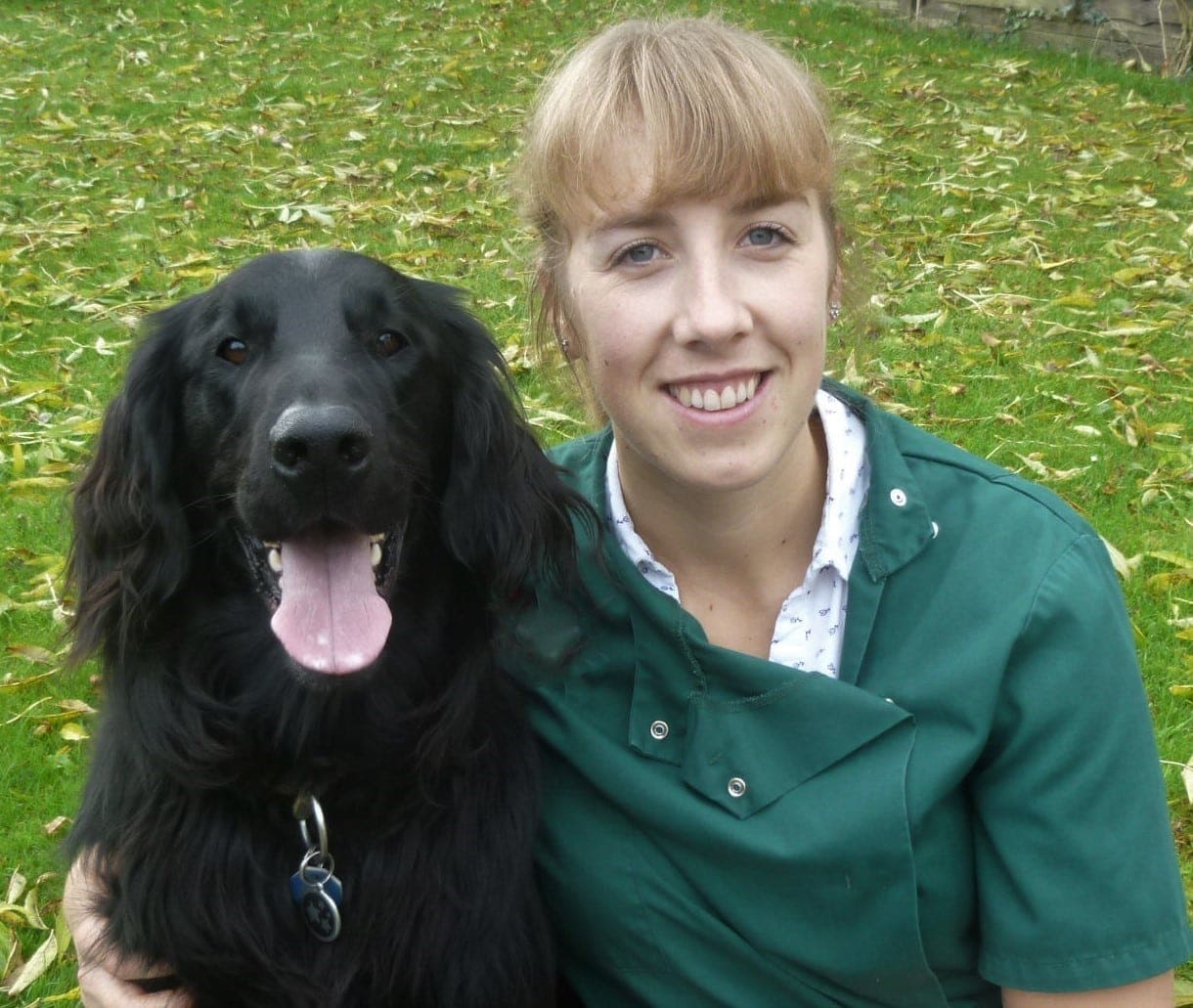Shar Pei & Poodle Mix (Shar-Poo): Info, Pictures, Characteristics & Facts

Updated on
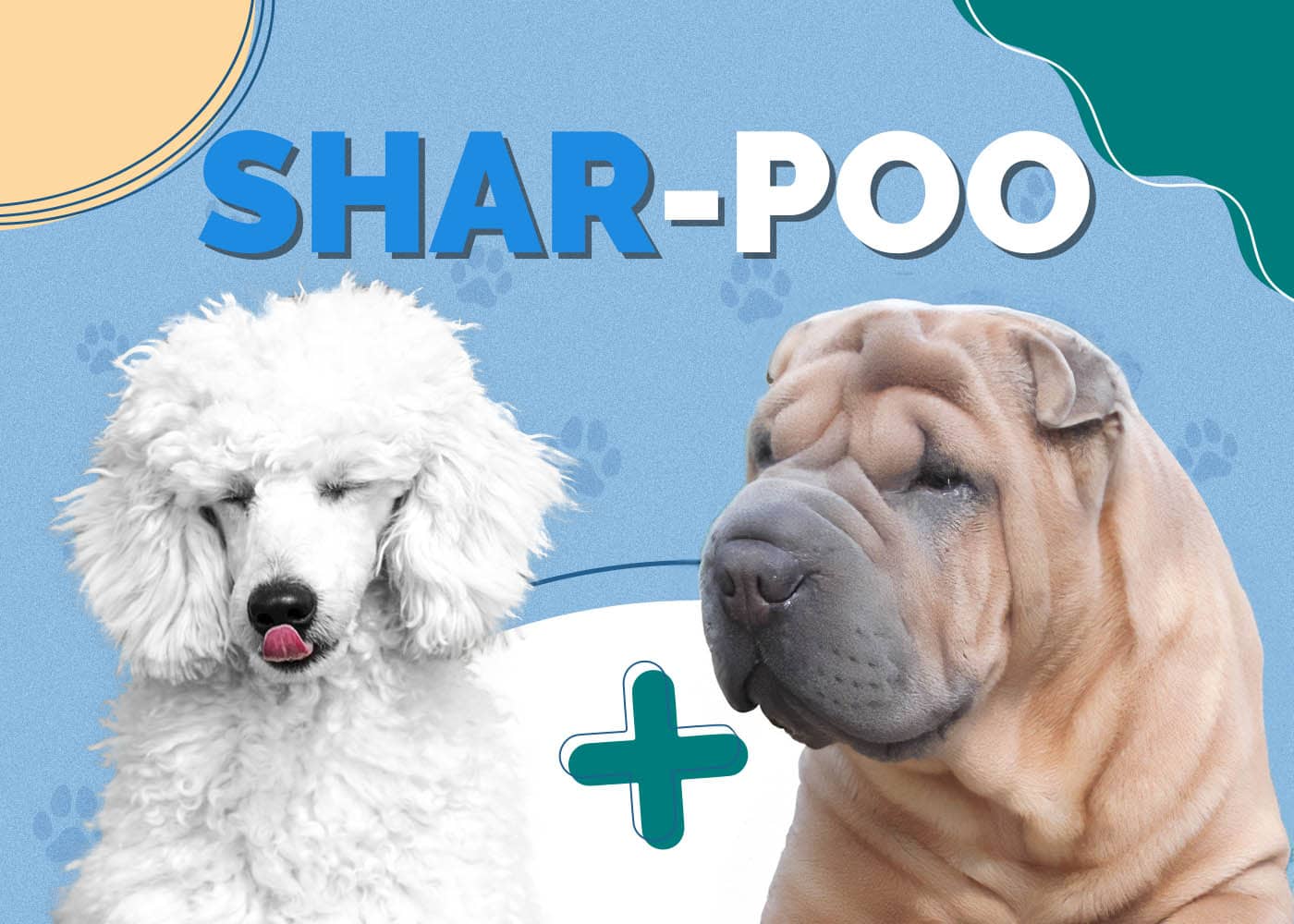
Height:
14-18 inches
Weight:
40-60 pounds
Lifespan:
12-15 years
Colors:
Black, brown, yellow, white, grey
Suitable for:
Families, singles, first-time dog owners, apartment living
Temperament:
Active, intelligent, affectionate, loyal, loving, playful, independent
The Shar-Poo is a hybrid breed, a cross between the playful Shar-Pei and the intelligent Poodle. This breed has the high intellect of the Poodle combined with the devotion, affection, and loyalty of the Shar-Pei, making them an ideal family pet. The Shar-Poo likely dates back to the early 1990s, when “designer dogs” were becoming increasingly popular for getting one or more desirable traits from the parent breeds. While their characteristics can vary fairly widely, Shar-Poos are typically large dogs with short coats and may have wrinkles like their Shar-Pei parent or curly coats like their Poodle parent.
Poodles are known as the pampered elite of the dog world, commonly being used as show dogs and having elaborate hairdos. However, the breed was originally bred for hunting and is one of the most proficient hunting breeds around. Their thick coats kept them warm and dry when hunting waterfowl, and their unsurpassed intelligence made them easy to train and take commands.
Shar Peis were developed in China as hunting and guard dogs and, unfortunately, were later commonly used for dogfighting. They are known for the folds of loose wrinkles that fall off their bodies, along with their tiny ears and large head that can appear somewhat imposing. Despite their heritage and appearance, these dogs are friendly and loving animals, albeit slightly aloof and independent at times.
Read on below for a more in depth look at this unique hybrid.
Shar-Poo Puppies
Before bringing home a Shar-Poo puppy, it’s important to consider that they are fairly large dogs with high exercise needs. They can be strong-willed and independent at times, which can make training a challenge. Their heritage of being used as hunting dogs and guard dogs makes them excellent family protectors, but they must be trained well and socialized early to prevent overreacting to new faces and other animals.
One thing that you can be sure of is high intelligence, as Poodles are considered to be one of the most intelligent dogs in the world, and the Shar-Pei is no slouch either. This usually makes training easy, so long as the stubborn streak of the Shar-Pei doesn’t rear its head. Shar-Poos are typically playful dogs that do well in family environments but prefer to be the only dog in the home, so you’ll need to socialize them early if you already have other dogs at home.
3 Little-Known Facts About the Shar-Pei Poodle Mix
1. Poodles come in three different varieties.
Poodles are the only dog breed that comes in three different sizes: Standard, Miniature, and Toy. These terms only describe the size, though, and these dogs are all a part of the same breed with similar temperaments and energy levels. Indeed, the American Kennel Club considers all three sizes a part of the same breed, even though they appear to be different dogs altogether.
2. The Shar-Pei almost went extinct.
The Shar-Pei was once the rarest dog breed in the world and nearly went extinct. They were listed in the Guinness World Records as the rarest breed in the world in the mid-1970s. When China became a communist state in the early 1940s, the government instituted a large tax on all dogs, which reduced their numbers drastically. The resulting publicity from the record pushed the popularity of the breed, and they were brought back from the brink by a few dedicated breeders.
3. Their coat has a specific function.
The Poodle’s fancy hairdo offered them protection from freezing cold water while hunting, but too much wet fur would then weigh them down. Hunters would thus strategically shear their coats and leave thick fur only protecting their vital organs.
Shar Pei’s wrinkly skin also served an important function. Since the breed was so widely used as guard dogs, their loose and wrinkly skin would protect them in dogfights. Another dog could grab on to the Shar Pei’s skin, but they could still easily get away without having any organs damaged.

Temperament & Intelligence of the Shar-Pei Poodle Mix 🧠
The Shar-Poo is a highly intelligent pooch that is affectionate and loyal toward their families. These dogs are great family companions, as they are great with kids, easy to train, and exceptionally loyal. They are athletic dogs that love to play and exercise outdoors but are highly adaptable to indoor apartment living too, provided that they get adequate exercise.
These dogs can be stubborn and aloof should they inherit the trait from their Shar-Pei parent, and this strong will can make training a challenge. That being said, they might be a breeze to train if they inherit that trait from their Poodle parent, and will thoroughly enjoy the process of learning commands too.
Shar-Pei Poodle Mixes are generally calm and placid dogs that are rarely aggressive, but they are powerfully loyal animals, and this may cause some problems with other dogs if they don’t get early socialization and good training.
Are These Dogs Good for Families? 🏡
The Shar-Poo is a great family dog, loyal as they come, with tons of love and affection to give. They are great with children too and will happily spend hours in the backyard playing. They can be cautious and wary around strangers but are rarely aggressive nonetheless, and adequate socialization should help.
Does This Breed Get Along With Other Pets? 🐶 😽
The Shar-Poo enjoys being the only dog in the home but can be persuaded otherwise with good training and socialization. They don’t have a strong prey drive and are fairly easy to train, so other pets shouldn’t be an issue.
Things to Know When Owning a Shar-Poo
Food & Diet Requirements 🦴
The Shar-Poo doesn’t have any specific dietary requirements, but they are fairly large and thus need as much good-quality protein as they can get. We recommend good-quality dry kibble with high protein content, with a meat listed as the first two or three ingredients. How much to feed them will naturally depend on their size, but in general, 2 to 3 cups of kibble per day is fine. This should ideally be split into two or three separate meals.
We advise against free feeding these pooches, as they can be prone to becoming overweight. Once they’ve had their fill, make sure to take the leftovers away. As with any dog, make sure they have access to fresh, clean water at all times.
Exercise 🐕
The Shar-Pei Poodle Mix is fairly energetic and will need at least an hour of intensive exercise per day, followed by a play session or training session. They are highly intelligent pooches and will benefit from mental and physical exercise. A brisk walk, jog, or run session followed by games of fetch or agility training is a great way to keep them mentally and physically stimulated.
At a bare minimum, an hour a day of exercise is required, but the more, the better. If possible, we recommend two sessions of exercise and interaction per day. This will keep your Shar-Poo happy and healthy, keep them from misbehaving and developing bad habits, and above all, help strengthen the bond between you and your pooch.
Training 🦮
Other than the odd moment of stubbornness, the Shar-Poo is generally an easy dog to train due to their high intellect. Their parent breeds both have a long history of working closely with humans, and this makes them happy and excited to follow commands. Positive reinforcement training is the way to go, as these dogs do not respond well to harsh training methods, and this may, in fact, make the process take far longer.
Early socialization and beginning training from a young age are vital. Getting your pooch used to being around other dogs and people at an early age is a massive advantage, as they will be less likely to be distressed or distracted during outings and more likely to follow commands. Training should begin on the day that you bring your puppy home. Simple commands like “sit” and “stay” are the foundation of good training, and they can be successfully taught to your dog from a young age.
Grooming ✂️
The coat of your Shar-Poo may be short like a Shar-Pei or thick and curly like a Poodle or every iteration between. Typically, it’s on the shorter and straighter side, which makes grooming a breeze. Brush them once a week and you’re good to go. If your Shar-Poo has a longer, thicker coat, you may need to brush them more often, at least every other day, to prevent knots and matting.
Shar Peis have folds of wrinkly skin all over their body, and if your Shar-Poo inherits this trait in any way, you’ll need to perform regular checks in and around these folds. Make sure they are kept dry and clean to avoid any infection or fungal growth.
Most dogs will need regular nail clipping, and we recommend beginning this process from puppyhood. This will get them used to the process and make clipping far easier in the future. The same goes for teeth brushing, which they’ll likely need a few times per week.
Health Conditions ❤️
While most designer breeds have the benefit of hybrid vigor and will often bypass the common genetic health issues of their parents, there is still a good chance of some of these issues being passed down.
With Poodles, common issues are hip and elbow dysplasia, Addison’s Disease, thyroid problems, and epilepsy. Poodles can also suffer from bloat and allergies at times and are prone to obesity if freely fed.
Shar Peis can also inherit hip and elbow dysplasia, as well as patellar luxation, autoimmune thyroiditis, and various eye problems, such as entropion, retinal dysplasia, glaucoma, and cataracts. Their loose, folded skin is also highly prone to infection if not kept clean.
Shar-Poos may inherit some of these issues, but they are generally a healthy breed, and if kept well-exercised and fed a healthy, moderate diet, they typically don’t suffer many health issues.
- Obesity
- Bloat
- Cataracts
- Entropion
- Retinal dysplasia
- Glaucoma
- Epilepsy
- Allergies
- Cancer
- Hip and elbow dysplasia
- Patellar luxation
- Addison’s disease
- Autoimmune thyroiditis
Male vs. Female
Shar-Poos can vary widely in size, even within the same litter, so males and females do not differ much in terms of weight or size. Their temperaments are also similar, and the only real differences may be that males are a fair bit slower to mature than females and, thus, cannot be trained as easily from a young age and become more attached to their owners.
Spaying and neutering your dog will have a large impact on their behavior, and they will generally become less excitable and aggressive after surgery. This will also prevent females from coming in heat and attracting males from around the area and possible unwanted pregnancies, and it will stop your male from wandering. Unless you intend on breeding, there is no good reason to not get this simple surgery done.
The main determiner of your dog’s personality and temperament is not their sex, but rather the way they are raised, trained, and socialized, and the environment that they are brought up in.
Final Thoughts on the Shar-Poo
The Shar-Poo is a great hybrid breed, with the intelligence of its Poodle parents combined with the affection and loyalty of the Shar-Pei. They make great family pets because they are gentle with children and friendly toward other pets and animals. While they can be slightly stubborn and headstrong at times, training is usually a breeze, and they are highly adaptable to almost any living environment.
Poodles are a popular breed for hybrids, and the Shar-Poo is further proof of why. These dogs feature the best traits of both parent breeds and make a wonderful family pooch.
See Also:
- Poodle Vizsla Mix (Vizsladoodle): Pictures, Temperament & Traits
- Terri-Poo (Australian Terrier & Poodle Mix): Info, Pictures, Traits
Featured Photo Credit: Pixabay




